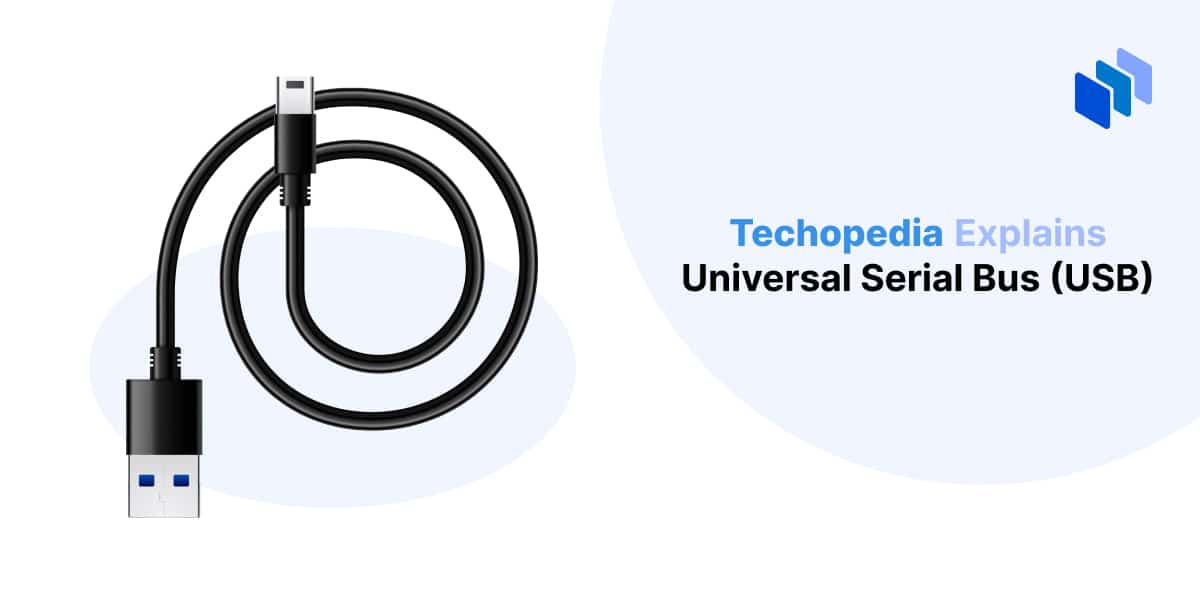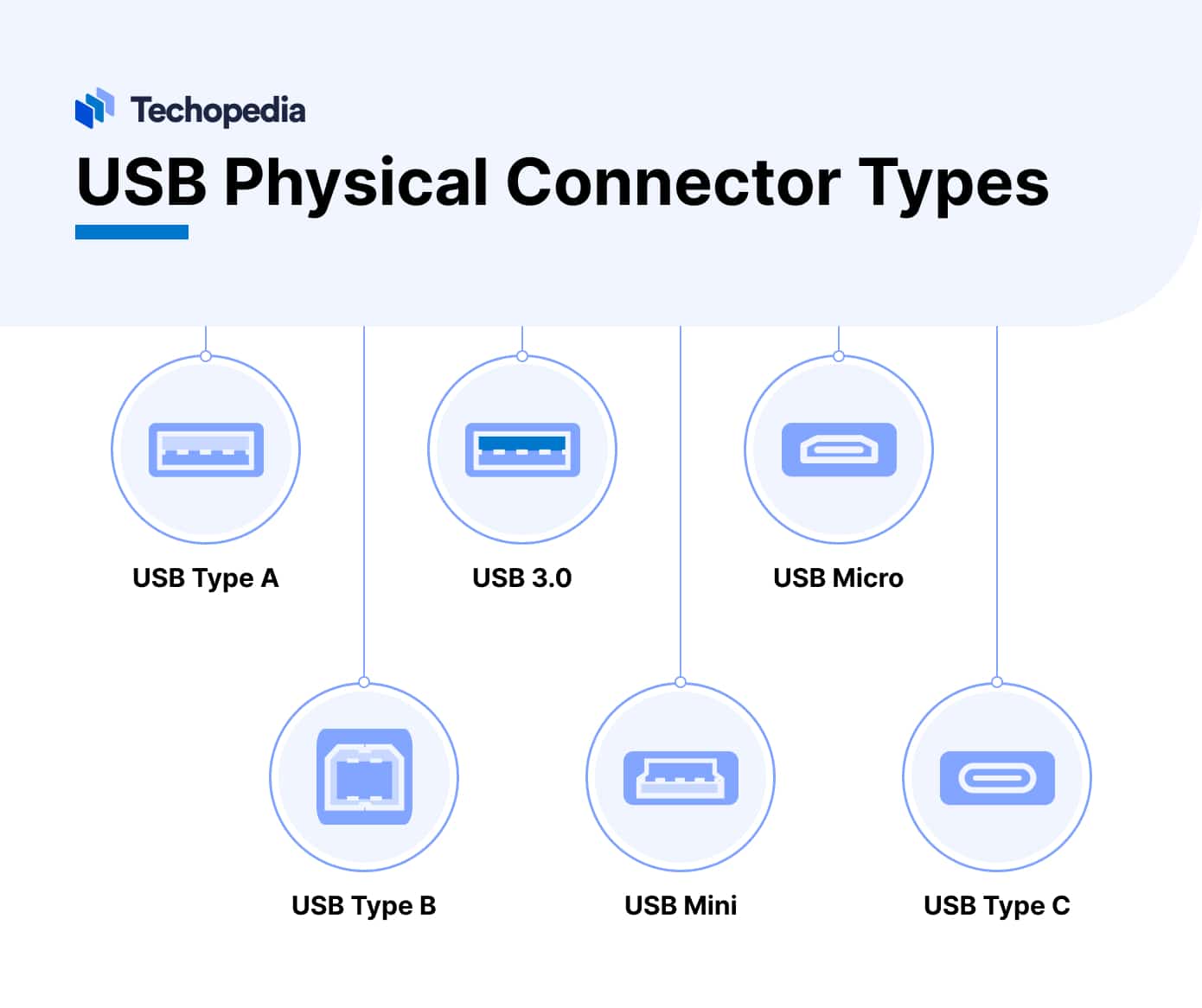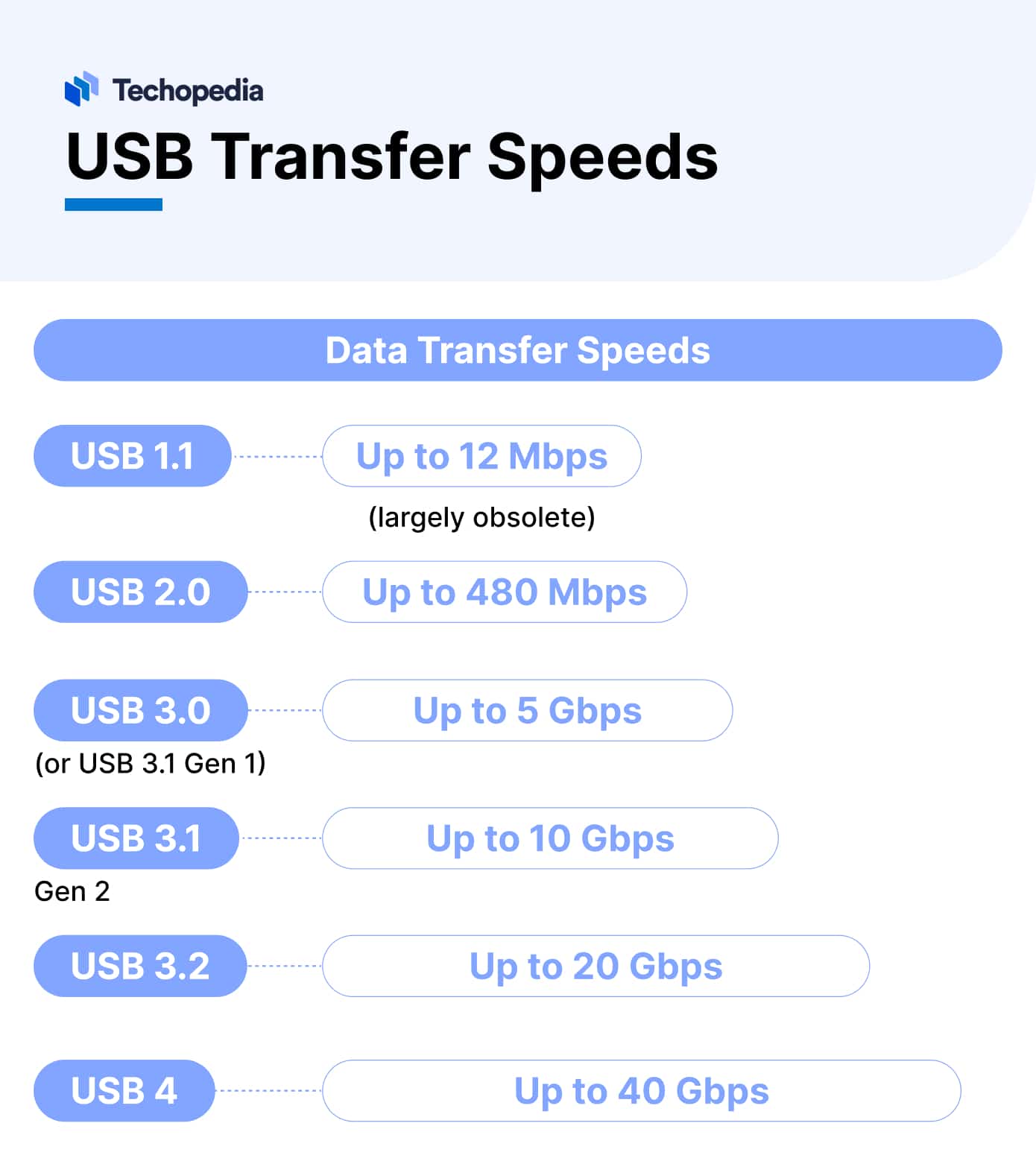What is a Universal Serial Bus (USB)?
The universal serial bus (USB) is a standard plug-and-play interface that allows computers and peripheral devices to connect with each other, transfer data, and share a power source.
In computing, a bus is a communication system that transfers data. The choice of bus depends on the intended use case, speed requirements, and the types of devices involved.
USB was developed by a group of tech vendors to address the limitations of older buses that used serial port and parallel port connections.
Key Takeaways
- USB is a plug-and-play connection interface for computers and peripherals.
- USB comes in various versions, each of which provides different data transfer speeds.
- USB ports and cables can provide electrical power to connected devices.
- USB-C is gradually replacing older connection types.
- USB4, which exclusively uses USB-C connectors, can dynamically allocate bandwidth for data and display protocols.
How USB Works
USB connections have a host/client architecture. The host, which is typically a personal computer (PC), is the primary controller of USB connections.
When you plug a USB peripheral into a host, the host’s operating system (OS) detects the peripheral’s firmware and if necessary, loads the device drivers required for data transmission.
To ensure efficient and reliable data transfers, USB cables use differential signaling and a layered protocol stack.
USB cables can also provide connected devices with electric power. The amount of power depends on the USB version and the peripheral device’s requirements.
Types of USB
Different versions of USB can have different types of physical connectors. Each USB type supports different data rates and capabilities, and the introduction of new connector types often coincides with the release of new USB specifications.
While older versions of USB that use type A or type B connections are still widely used, USB-C connectors are close to becoming a real universal standard for connecting and powering devices.
Key Features of USB-C
The European Union passed legislation mandating USB-C as the standard charging port for consumer electronics. This has accelerated USB-C adoption rapidly.
The key features of USB-C include standardized connectors and connection interfaces, support for multiple data transfer rates, plug-and-play functionality, backward compatibility, and support for USB power delivery (USB PD).
USB PD allows devices to negotiate power requirements and deliver up to 100 watts of power through USB-C connections.
USB Transfer Speeds
USB transfer speeds vary by version. Newer versions of USB offer significantly faster data, audio, and video transfer speeds than older versions.
USB 1.0 vs. USB 2.0 vs. USB 3.0 & USB4
USB 1.0 had a maximum speed of 12 Mbps and was mainly used to connect keyboards and mice to desktop computers.
USB 2.0 increased data transfer speed to 480 Mbps, which enabled external storage devices and printers to be hot-swapped.
The introduction of USB 3.0 significantly increased data transfer speeds, and USB4 now boasts speeds of up to 40 Gbps.
USB and Malware
In 2000, the first USB flash drives were released commercially. While these handy portable storage devices helped increase the adoption of the USB standard, they also inspired a new type of cybersecurity attack vector, which we now call USB drop attacks.
In this type of security exploit, the attacker leaves a USB drive infected with malware in a public place. When an unsuspecting victim finds the USB drive and plugs it into their computer, the malware will automatically execute and allow the attacker to exfiltrate sensitive information or use the infected computer as a launchpad for further attacks.
Windows antivirus software and antivirus Mac tools with real-time scanning capabilities can actively monitor for any malicious activity as soon as the USB drive is inserted and provide an additional layer of protection.
USB Pros and Cons
USB has become the default connection port and cable type for a wide range of peripheral devices.
It’s important to mention, however, that USB hot-swappable connections are susceptible to damage if the connection points are treated roughly. When USB cables are mishandled or inserted forcefully, it can lead to bent pins, loose connections, and potential data loss.
Pros
- USB reduces the need for multiple connection cables
- New versions of USB are backward-compatible
- Connections are plug-and-play
- USB offers a range of data transfer speeds
Cons
- Extremely long USB cables can experience signal degradation
- Older versions of USB may not provide sufficient power for all use cases
- Frequent plugging and unplugging can wear out cable connections
- Different USB versions offer varying transfer speeds and can have different connection types
The Bottom Line
Universal serial bus’s meaning encompasses both the physical connectors and the communication protocols that enable digital devices to connect, communicate, and share power.
USB provides a universal, convenient, and versatile connection interface, but the standard has evolved over time, and users need to use the correct version of USB to achieve the desired speed and/or power levels.
FAQs
What is a Universal Serial Bus in simple terms?
What is a USB port?
What is a universal serial bus controller?
What is the advantage of Universal Serial Bus?
What is the function of the USB?
Why would you need a USB port?
References
- Differential Signaling (ScienceDirect)
- USB-C becomes universal charging standard in the EU (Würth Elektronik)
- USB Charger (USB Power Delivery) (USB)
- USB4® (USB)
- USB Drop Attacks Continue to Cause Cybersecurity Incidents (OSIbeyond)









